Budget 2024: Our top stories of the week
Read more about the Union Budget 2024 announcements and their detailed analysis
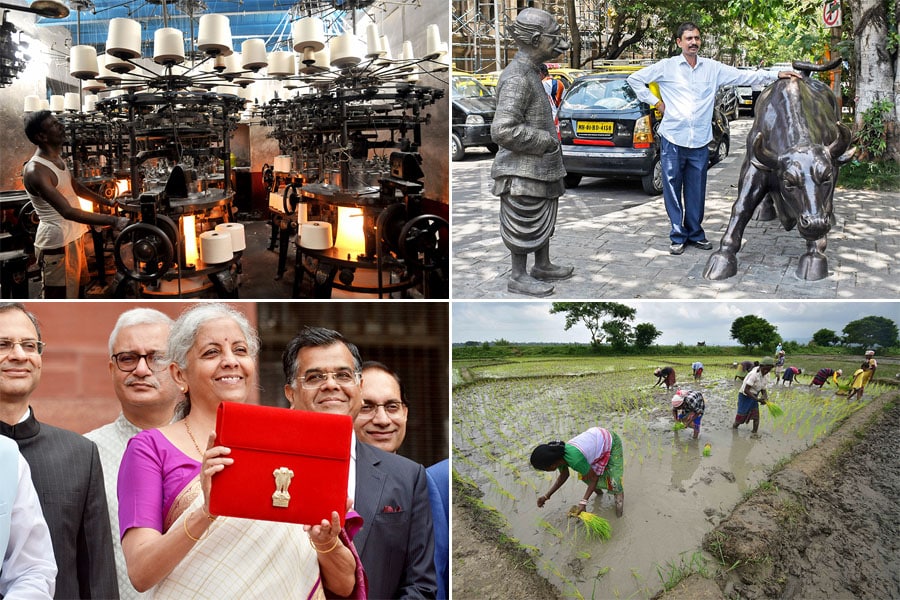 Clockwise: A labourer works in a Hosiery mill in Kolkata; A man poses for a photo next to the statue of the bull near the Bombay Stock Exchange (BSE) building; Farmers plant rice saplings at a paddy field in Nagaon District of Assam; Finance Minister Nirmala Sitharaman (C) holds a folder containing Union Budget documents
Clockwise: A labourer works in a Hosiery mill in Kolkata; A man poses for a photo next to the statue of the bull near the Bombay Stock Exchange (BSE) building; Farmers plant rice saplings at a paddy field in Nagaon District of Assam; Finance Minister Nirmala Sitharaman (C) holds a folder containing Union Budget documents
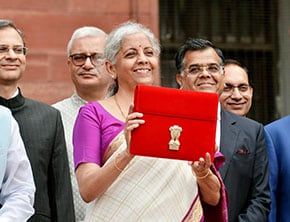
This week's newsletter will be all about Finance Minister Nirmala Sitharaman's Budget 2024 speech. Many receipts were presented for the term before, and many announcements were made for the coming year. Everything had a coalition tint because that is the mandate for the next five years. Job creation had absolute focus, while investors were offered a mix of happy and confusing news. The middle class was ignored, and so were states that did not have leverage at the centre. As the Budget is being discussed in the parliament for this session, here's a quick summary of what was offered on July 23, followed by a detailed analysis of some of the crucial announcements.2) All about continuity
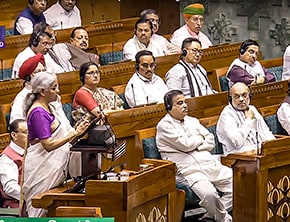
On the way to achieving its FY26 fiscal deficit goal of 4.5 percent of GDP, the government announced sops for women, farmers, and the youth to spur an inclusive and investment-led growth cycle. FM Sitharaman lowered the FY25 fiscal deficit estimate to 4.9 percent from 5.1 percent projected in the Interim Budget in February. There is no change in the budget allocation of Rs 11.11 lakh crore towards capex. There is a focus on social packages to help farmers, women, and the youth to accelerate reforms, growth, and energy transition. There are allocations to support small businesses and agriculture to boost rural income for inclusive development. The unwavering commitment towards fiscal prudence was a clear message that rang through the speech. Here's how experts are seeing it.3) Jobs, jobs, and more jobs
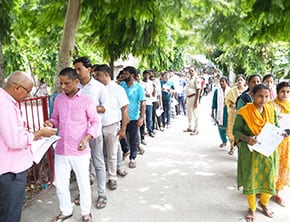
After the recently concluded and closely contested Lok Sabha Elections, political pundits spoke at length about how failing to curb unemployment during the first two terms landed the Narendra Modi government in a coalition soup. Come Union Budget 2024, the spotlight on job creation could not have been brighter. Minister of Finance Nirmala Sitharaman announced a three-pronged strategy to boost job creation which also incentivises employers. However, the problem of blue-collar jobs did not find much attention. Experts believe we are still dealing with the structural problems created by pockets of skills that respond to industries and vice versa. The focus needs to be on traditionally labour-intensive sectors as well. The plan has been laid out. Will it work? Experts weigh in.
Discover
1) Focus on agriculture and rural India
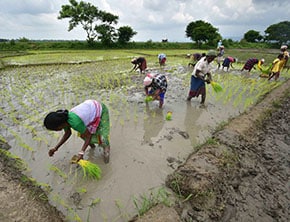
In her speech on Tuesday, the FM proposed an allocation of Rs1.52 lakh crore for agriculture and allied sectors in the Union Budget 2024 and made overall provision of Rs2.66 lakh crore for rural development, including rural infrastructure. This puts the focus on around two-thirds of India's population living in rural areas, making their productivity and resilience one of the nine priorities of pursuing the Viksit Bharat dream. Rural spending has grown faster than the total spending during UPA-I and previous two terms of the Narendra Modi government. Will the budgetary allocations be enough to spur growth in the rural economy? Here's what experts are saying.2) Good luck, investors

In the first Budget of the coalition government led by Prime Minister Narendra Modi, the Minister of Finance proposed to increase long-term capital gains tax (LTCG) from 10 percent to 12.5 percent, short-term capital gains tax (STCG) from 15 percent to 20 percent on certain financial assets, and levy higher securities transaction tax (STT) on the futures and options (F&O) trade. The exemption limit has been raised from Rs1 lakh to Rs1.25 lakh. Listed financial assets held for more than a year will be classified as long term, while unlisted financial assets and all non-financial assets will have to be held for at least two years to be classified as long term. Experts estimate this rate increase will fetch Rs2000 crore via LTCG and Rs6000 crore via STCG for the full year. However, an increased tax outlay for equity investors will dampen sentiments. How will it impact trade volume? Let’s figure out.3) Boost for MSMEs

According to the Budget impact report released by CRISIL, the Micro, Small and Medium Enterprises (MSMEs) sector faces a significant funding gap of Rs 20-25 lakh crore. MSMEs typically lack sufficient collateral, and their financial records often do not meet banking standards. These enterprises need help with scaling, bridging the funding gap, and surviving a competitive market. In her Budget 2024 speech, the FM announced an enhanced limit for Mudra loans from Rs10 lakh to Rs20 lakh for entrepreneurs who have successfully repaid their loans. Twenty-four new branches of SIDBI will be opened for MSMEs. TDS for ecommerce operators would be reduced to 0.1 percent and ecommerce export hubs will be established through PPP. Here's a quick overview of how the new announcements will boost the struggling MSME sector.4) Onwards, to the green transition

India has set the goal of becoming a net-zero economy by 2070. We also want to build 500GW of non-fossil fuel energy capacity over the next six years. India has been aggressive about the transition to renewable energy. But the pains of a growing economy also mean that abandoning the reliance on thermal power, led by coal, is still a far-fetched dream. Unachievable for at least a few more years. To accelerate the completion of this plan, in the Budget speech, allocation to the Ministry of New and Renewable Energy (MNRE) was increased to Rs19,100 crore, and allocation to the Ministry of Power remained the same as the Interim Budget at Rs20,502 crore. Important announcements about developing and building small modular reactors, private sector participation, and advanced ultra-super critical thermal power plants grabbed the attention. Here's how all these announcements make the roadmap for green transition.














